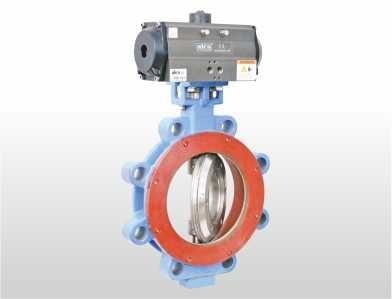A butterfly valve is a valve that can be used for confining or controlling a stream. The end framework shows up as a circle. Movement is like a ball valve, which thinks about quick turns down.
Basics of Butterfly Valves
Butterfly valves are generally liked because they are lower in cost than other valve plans and are lighter in weight, meaning less help is normal. The circle is arranged at the point of convergence of the line, going through the plate is a bar-related with an actuator obviously of the valve.
Turning the actuator turns the circle either equivalent or inverse to the stream. Not at all like a ball valve, the circle is for the most part present inside the stream, thus a pressure drop is continually provoked in the stream, paying little psyche to the valve position.
A butterfly valve is from a gathering of valves called quarter-turn valves. In movement, the valve is open or closed when the circle is turned a quarter turn.
The "butterfly" is a metal plate mounted on a post. Right when the valve is closed, the plate is turned so it shuts off the way. Exactly when the valve is open, the circle is turned a quarter turn with the objective that it allows an essentially limitless segment of the fluid. The valve may moreover be opened slowly to gag stream.
Butterfly valves contain a circle joined to a shaft with a course used to work with turn. These are seen as high recovery valves since simply the circle impedes the valve stream way. As far as possible is for the most part high and the strain drop across the valve is to some degree low.
The butterfly valves are used for limited gagging where a tight halt isn't required. Right when open, the butterfly makes little unevenness or assurance from the stream. Aira Euro Automation is the leading butterfly valve manufacturer in India.

Butterfly Valve Animation
Recommended Uses :
- Open/shut or stifling organizations
- Normal movement
- Immaterial fluid getting in line
- Applications where minimal pressure drop is needed
Benefits :
- Insignificant cost and backing
- High breaking point
- Incredible stream control
- Low-pressure drop
Burdens :
- High power expected for control
- Leaned to cavitation at lower streams
- Nonappearance of tidiness and feebleness to manage slurry applications.
- Overall not assessed as air pocket tight, and the openings and break strategies for getting around the circle stem are conceivable captures for fluids and slurries. Some tip-top show butterfly valves meeting ASME class VI spillage examinations are at any rate available on demand.
Applications :
- For the most part moderate for gigantic lines in compound organizations, water treatment, and fire security structures. General sizes open are 2″ to 48″, notwithstanding the way that sizes up to 96″ are available from explicit manufacturers.
- Due to the valve setup, solidifying a little very close viewpoint and lower weight than most valve types, the butterfly valve is a reasonable choice for greater line sizes (for instance 8″ or more).
- The butterfly valve agrees to ASME's very close perspectives and strain evaluations. This engages the valve to be helpfully retrofitted in line regardless of what the manufacturer
- The ASME pressure classes adhered to by most manufacturers consolidate 150, 300, and 600# allowing a most significant type of 1500 psi.
Material Standards :
- AWWA C504 for flexibly arranged butterfly valves
- Programming connection point 609 for conveying and wafer-type butterfly valves
- MSS SP-69 for general butterfly valves
- UL 1091 for prosperity butterfly valves for fire security organizations

